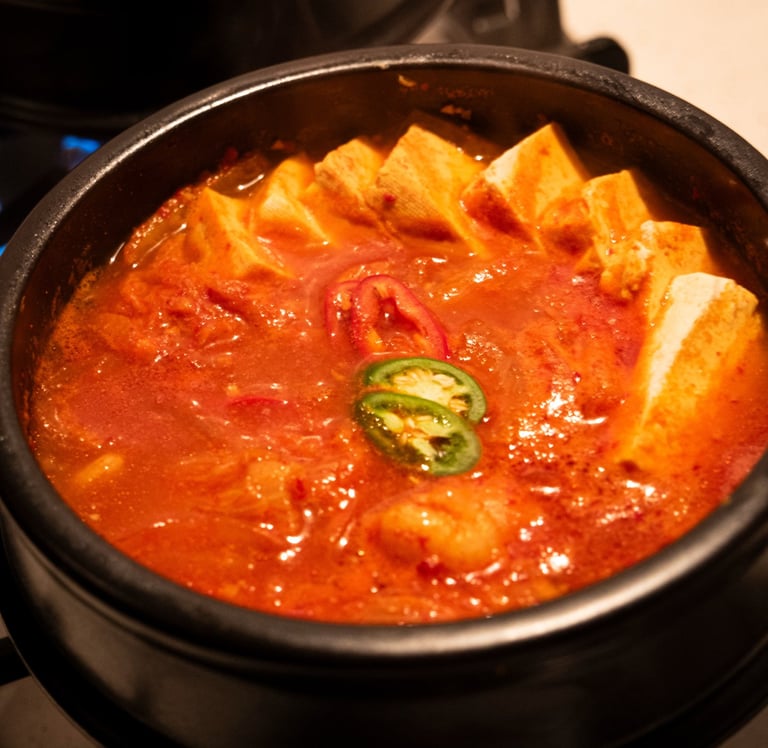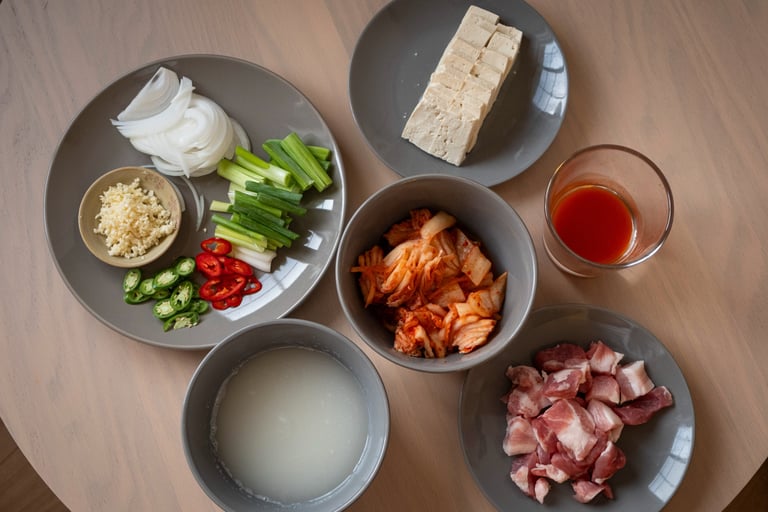Kimchi Jjigae - Korean's Favorite Comfort Food
There’s something about a bubbling pot of kimchi jjigae that just feels like home. It’s spicy, savory, a little tangy, and full of soul. Whether you're cooking for family or just taking care of yourself after a long day, this stew will warm you from the inside out. Let’s make it together.
7/24/20252 min read


Ingredients + Preparation
(2 servings)
1 cup well-fermented kimchi, chopped
7 oz pork belly or pork shoulder, sliced
2 oz tofu, cut into bite-sized cubes
1/8 medium onion, thinly sliced
1 oz green onion, cut into 2-inch pieces
2.5 cups rice-washed water (water saved from rinsing uncooked rice)
2 teaspoons ground garlic
1 tablespoon Korean red pepper powder (gochugaru)
1 tablespoon soy sauce
1 tablespoon rice wine (mirin or cooking sake)
1 teaspoon beef dashida (Korean soup stock powder)
A few slices of red and green jalapeños, for garnish
A small drizzle of sesame oil (optional but recommended)
A few tablespoons of kimchi juice (from the chopped kimchi, reserved)
Cooking Instructions
Sear the pork:
In a medium pot over medium heat, cook the pork slices for about 3 minutes, just until lightly browned and some fat is rendered.Add the base flavors:
Stir in the chopped kimchi, ground garlic, and a light drizzle of sesame oil. Cook together for 5 minutes to deepen the flavor.Deglaze and soften:
Pour in 1 tablespoon of rice wine to help soften the kimchi and mellow the pork.Layer in the vegetables:
Add the sliced onion and green onion to the pot.Pour in the broth base:
Add the 2.5 cups of rice-washed water and stir gently.Season the stew:
Add gochugaru, soy sauce, beef dashida, and the reserved kimchi juice. Stir well to combine.Simmer:
Bring to a boil, then reduce the heat and let it simmer for 15 minutes, uncovered.Add tofu:
Gently stir in the tofu cubes and simmer for another 5 minutes, allowing them to soak in the flavors.Finish and garnish:
Just before serving, top the stew with slices of red and green jalapeños for a fresh kick and color.
Serve Warm
Ladle into bowls and serve with freshly steamed rice. It’s not just a meal, it’s a reminder to slow down, breathe, and enjoy something simple and satisfying. The kind of dish that makes any place feel a little more like home.



